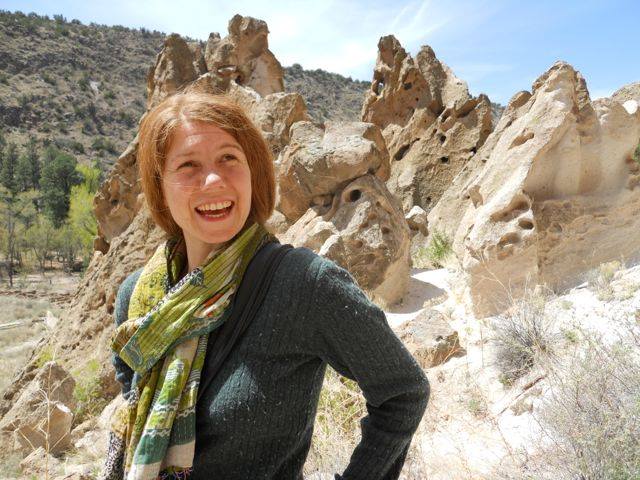An Essay of the Man from the North
by Rivera Sun

If we, the people, wrote a constitution now, what would go in it? Equal rights for women, men, non-binary, and undefined? Caps on wealth tied to poverty levels? Rights of nature? Reparations for past crimes, wrongs, and thefts? Limits on military spending? A free and open Internet? Abolition of mass incarceration, or the entire prison system; replaced with restorative and community justice? Free healthcare for all? Living wages or universal basic income? Would we keep corporate personhood or the electoral college?
The possibilities are endless; they include a million ideas over which to agree or vehemently oppose. We can envision things (like airplanes, climate change, and the Internet) beyond the Founding Fathers’ wildest dreams . . . and that is exactly the point of even raising the question of a Constitution 2.0. Our first constitution was written by propertied white men to the exclusion of all others, centuries ago when messages traveled by horseback and 94% of the population was excluded from all political process. Like an aging computer program, we’ve patched in updates over the years, but perhaps its time to overhaul the operating system and redesign it to reflect the dreams, needs, interests, and ideas of 100% of us.
The US Constitution was designed to empower and serve property and wealth. It is unresponsive to the demands and plights of ordinary people. It often fails to incorporate concerns beyond those of commerce, wealth, and property. The Bill of Rights was added as a protest by constitutional delegates who were alarmed by the earlier drafts. Small protections like the EPA, the Clean Air & Water Act, the FDA are vulnerable to corruption and dismantlement by hostile administrations. The Declaration of Independence’s revolutionary proclamation of the inalienable right to “life, liberty, and pursuit of happiness” was shifted in the Constitution to preserving the rights of an elite to “life, liberty, and protection of property”. Ever since then, we have struggled to update the US Constitution to reflect the needs of its people. Perhaps it’s time for a Constitution 2.0.
I am not recommending that we completely throw out the old and rush a new political operating system into existence. (No software designer would advise that approach.) This creates power vacuums that are inevitably exploited by the most depraved, opportunistic, piratical and tyrannical bullies. No, I am instead recommending that we allow the potential of a nationwide re-imagining of our governing documents to throw open the doors of civic conversation . . . and let our dreams break free of the corsets that bind our imagination and suffocate our political aspirations.
We risk our lives for mere crumbs, waging struggle for the chance to glean the leftovers from the plutocrats’ feasts, or lick the floors under their groaning tables. We deserve to dream larger. We should organize to build, seize, and run the bakeries, kitchens, farms, delivery systems, groceries and warehouses by which the daily bread of our lives are given shape and form. We have been trained to petition for scraps like pleading beggars rather than seizing the means of destiny, existence, and self-governance.
I dare you to lift your eyes and dream like the magnificent human being that you are: one among many, each equal to the other, none above or below the next.
I call for a Constitution 2.0 because the old document – and all of its revisions right up until today – was written by a narrow elite with only partial enfranchisement of our citizenry. We have never imagined what all 320 million of us might craft as a governing structure. Would mother and fathers demand veto power over the wars their children are sent to fight in? Would students demand referendum rights on whether our budget should be spent on education or military? Would seniors insist on basic incomes and affordable healthcare so they can live their elder years in ease, contributing their skills and wisdom to our communities? We cannot answer these questions in and through our current political system. What would a Constitution 2.0 look like if it was designed to empower (not limit) widespread political participation?
Never in the history of the United States, have we recognized the shared humanity of one another and cultivated the respect and trust that we would need to write a Constitution 2.0. Nor am I foolish enough to assume that we have those skills now. A constitutional convention (as imagined by the Founding Fathers) would most likely devolve into a brawl, a civil war, an oligarchic coup, or worse.
Democracy of, by, and for the people can not be crafted overnight. It is a mass endeavor, one that spans the scope of years, and is designed to engage our citizenry in a multitude of ways. Creativity, visioning, education, knowledge-sharing, communication, dialog, exploration would all be needed. Healing, truth-telling, and connection are all necessary for a populace as deeply wounded and divided as ours. When I call for a Constitution 2.0, I am asking not just for a final document, but a collection of processes by which we, in pursuit of shared ideals, forge a more perfect union than the original framers of the US Constitution could ever envision. We have no chattel slavery any more, though racism continues to plague our land. Women are no longer property, though neither are they treated as men’s equals. The child is no longer a creature “to be seen and not heard”, but a treasure unfolding over time, offering insights and gifts of their own. The LGBTQ community is coming out of closets and shadows and the margins of society where centuries of persecution has pushed them for too long. The Earth is demanding that we listen and treat the living systems with respect. So much has shifted since the late 1700s. We must update our operating system to keep pace.
While it is foolhardy to imagine that our populace could enter a room without dealing with the harms of the past, present, and future; it is also inaccurate to assume that we are incapable of undergoing a transformative process in pursuit of a Constitution 2.0. Such a goal requires a realistic assessment of the resources we need, the pitfalls and sabotages of the processes, and the depth of understanding, truth-telling, growth, knowledge-sharing, and healing that would facilitate an effective redesign of our governing structure. We need to call upon our institutions to paly a supportive role instead of a destructive, dominating, or manipulative role.
We must ask ourselves: what might we do to prepare the entire populace for such a revolutionary, inspiring, and terrifying endeavor? After centuries of abuse, oppression, injustice, inequality, and suffering, how would we heal enough of our wounds to even discuss the crafting of a new constitution with each other? Backloads of lies and propaganda need to be cleared out. Truth-tellings could be held (perhaps everyday in every town for the next decade). Story circles could be facilitated to help us learn to look into the eyes of our fellow citizens and start to hear and know each other beyond the stereotypes perpetuated in the fear-mongering and power-hoarding media apparatus of elites. The information bubble that hovers unseen over the United States needs to be burst so the bright ideas and best practices from around the world can be seen and shared. Knowledge must be spread of participatory, direct, wise, and real democracy; horizontal organizing, sociocracy, the commons, collective processes, and so much more. Lessons and training on how to hold a discourse (rather than a shouting match) need to become as common as driver’s education courses.
To even raise these ideas is undoubtedly considered treasonous under a Constitution designed to preserve the power of the rich under the guise of “democracy”. The true revolutionary is always a traitor to the established system. The revolutionary, however, always shows steadfast dedication to the well-being of the people. They never rest on laurels nor suffer the laurel wreathe to be placed upon their heads. They leap down off of pedestals and wade into the muck of life. They describe the horizon of possibility long before others dare to look in the direction of the rising sun.
They dare to call for change when the time for change has come: It is time for a Constitution 2.0 and all the transformations we must undergo to stride in the direction of such a vision.
______________________________
Read more from The Man From The North in Rise and Resist: Essays on Love, Courage, Resistance, Politics, and Democracy from The Dandelion Insurrection
The Man From The North is a fictional writer in Rivera Sun’s novel, The Dandelion Insurrection and the sequel, The Roots of Resistance. The novel takes place in the near future, in “a time that looms around the corner of today”, when a rising police state controlled by the corporate-political elite have plunged the nation into the grip of a hidden dictatorship. In spite of severe surveillance and repression, the Man From the North’s banned articles circulate through the American populace, reporting on resistance and fomenting nonviolent revolution. This article is one of a series written by The Man From the North, which are not included in the novel, but have been collected in a book of essays Rise and Resist which can be read here

Author/Activist Rivera Sun has written twelve inspirational and hope-filled books that celebrate our human ability to create change for the better. Rivera’s writing is syndicated nationally and her articles have appeared in over one hundred journals. She speaks and teaches strategic nonviolent civil resistance inter-nationally. She was co-host for five years of several popular radio shows, She can be reached through her website: www.riverasun.com